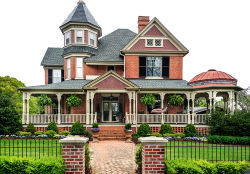The Problem With Old Chimneys
Here in our community, we have beautiful, historic homes lining streets and neighborhoods. These homes are some of the oldest buildings in the United States, some dating back to the early 1800s, and they are well-worth saving. At Billy Sweet, we take safety seriously, and we think it’s important to preserve and protect these beautiful fixtures in New England. That’s why we strive to offer professional and affordable chimney services and specialize in historic chimney care.
Historic Homes
Many systems in historic homes need to be updated, for comfort and efficiency, but also safety. You might have a home that was updated with electricity, gas, or central heat and air, and most likely has had the plumbing updated in recent years as well. This is because old systems are less efficient and may be unsafe. Your national and local safety codes may require updates in order for the home to be insured or zoned properly. They may need to be updated in order to work with new water or waste systems, or in the case of the chimney, to reflect new knowledge of chimney and fire science.
It’s important to hire a professional when your home needs work, and a certified professional has a responsibility to report code violations, safety hazards, and any damage observed. This presents a problem where chimneys are concerned. Though chimney fires account for 25,000 house fires per year, homeowners continue to neglect professional chimney care, believing it a waste of money.
Historic Chimneys
All or nearly all chimney fires are preventable with routine chimney care and swift repairs when necessary. The problem with historic chimneys is that when fire safety codes are updated, it may require an update to old chimneys. When a homeowner purchases a historic home with an old chimney, and updates haven’t been made for many years, it may not be code-compliant. It’s our responsibility to bring the chimney system up to code. This is required by your municipal government, HOA, fire marshal, and homeowners insurance.
At Billy Sweet Chimney Sweep we take safety seriously, and it’s our goal that all our customers and neighbors are safe and warm this winter. That is why we offer routine chimney sweeps and annual inspections year-round, so you aren’t surprised by a repair in the fall. We recommend all systems be up to date and the chimney code-compliant before burn season, so we’ll complete your inspection and provide a report, so that plans can be made for repairs and updates.
Common Updates to Old Chimneys
We often see historic chimneys that have minor problems and need minor repairs, however, there may be major compliance issues with your chimney. Many historic chimneys have old and broken clay tile liners–or no liner at all, making it a fire hazard as well as a carbon monoxide safety risk. Smoke chambers are often missing or ill-shaped, and must be updated to reflect new standards. Your historic chimney may need to be rebuilt, restored, or renovated, and we specialize in this work, keeping the integrity of your historic home in mind.
These services cost money, take time, and require planning and patience, but in the end, your home will be more valuable and your family will be safer after your historic chimney is serviced.
Schedule chimney services with Billy Sweet by calling 617-469-4528.

